|
|
Updated as per The Hawk Moths of the North America, 2007, James P. Tuttle (Sphinx to Lintneria); April 2009
Updated as per personal communication with Derek Bridgehouse (Live Oak County, Texas), October 6, 2018
|
Lintneria istar
(Rothschild& Jordan, 1903) Hyloicus istar
Istar Sphinx
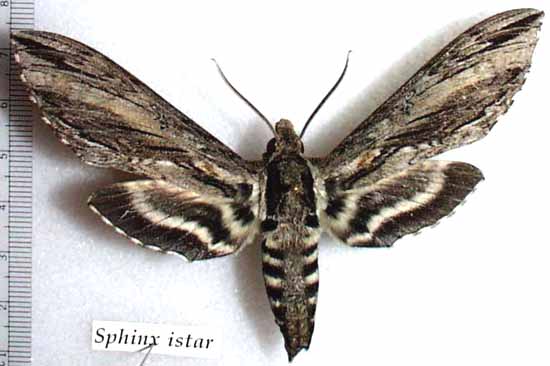
Lintneria istar by Bruce Walsh.
This site has been created by Bill Oehlke.
Comments, suggestions and/or additional information are welcomed by Bill.
TAXONOMY:
Family: Sphingidae, Latreille, 1802
Subfamily: Sphinginae, Latreille, 1802
Tribe: Sphingini, Latreille, 1802
Genus: Lintneria Butler, 1876
Species: istar, (Rothschild& Jordan, 1903)........
|
DISTRIBUTION:
Lintneria istar, the Istar Sphinx (Wing span: 4 - 4 1/2 inches (10.2 - 11.4 cm)), flies in mountains
and pine-oak woodlands from southern Arizona east to South Texas and
south to Guatemala. Mexico is the specimen type locality.
Ian Kitching reports that L. istar, separatus, geminus, lugens and L. pseudostigmatica have all been confirmed from Michoacan, Mexico.
Global Mirror reports them from Tamaulipas, Mexico.
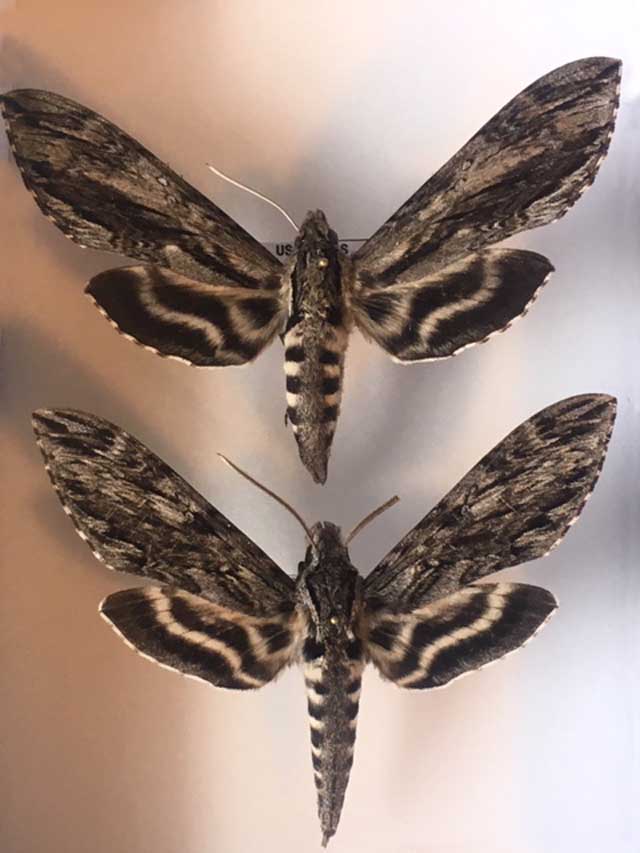
Lintneria istar top, Live Oak County, Texas,
Lintneria separatus bottom, Apache County, Arizona,
courtesy of Derek Bridgehouse.
The upperside of the forewing is dark gray with brown tinges. A series of narrow dashes runs from the tip to the
cell spots, and a wide black band runs from the middle of the outer margin to the base of the wing. The narrow dashes and darker black band, accentuate a paler grey
"channel" running form the cell to the outer margin.
The upperside of the hindwing is black with two white bands.
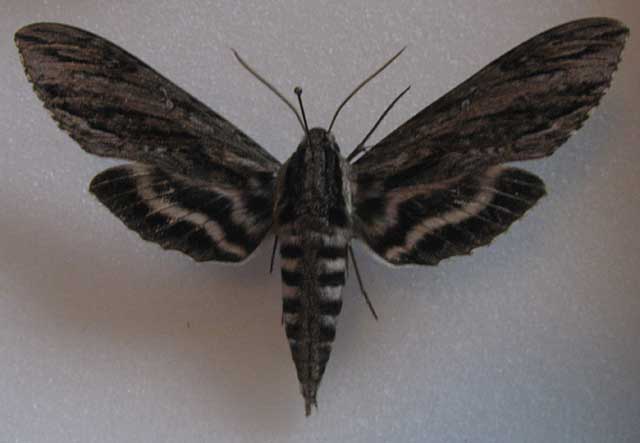
Lintneria istar, Arizona, courtesy of Evan Rand.
Until very recently (Tuttle: The Hawk Moths of North America, 2007), this moth was classified as Sphinx istar.
FLIGHT TIMES:
Lintneria istar adults fly from July-September.
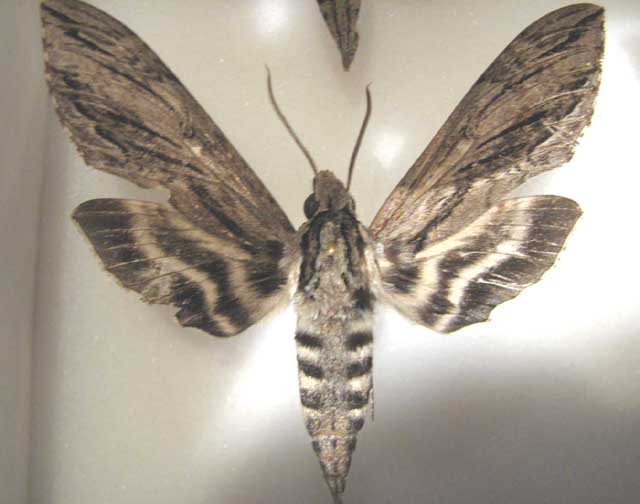
Sphinx istar, Madera Canyon, courtesy of Evan Rand.
ECLOSION:
Little is known about the eclosions of the earth pupators, but many believe pupae wiggle toward the surface just prior to emergence.
SCENTING AND MATING:
Istar females extend a scent gland from the posterior of the abdomen to lure in the night flying males.
EGGS, LARVAE, PUPAE:
Istar Sphinx larvae feed primarily on mints (Salvia). |
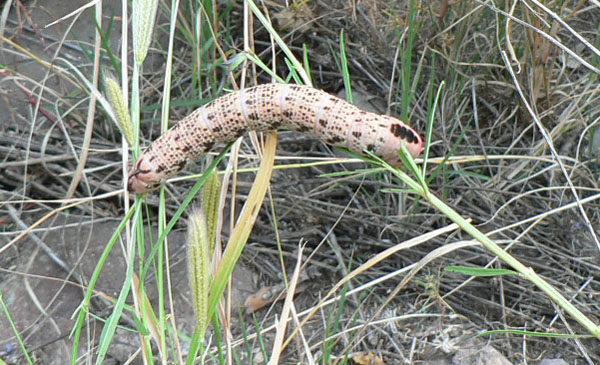
Lintneria (Sphinx) istar or separatus, Ft. Davis, Texas,
October 1, 2005,
courtesy of Mary Brown via Katherine McMahon.
Please visit my special request for images of Lintneria species larvae at
Lintneria larvae, and help if you can.
It is anticipated that the Lintneria larvae will most often be encountered on Lamiaceae: Salvia (Sage), Mentha (Mints), Monarda (Beebalm)
and Hyptis (Bushmints); Verbenaceae: Verbena and Lantana camara (shrub verbenas or lantanas).
Although they may be encountered feeding during daylight hours, one is even more likely to discover them feeding in the evening or after dark.
Two of the greatest clues for discovering larvae are stripped foliage and droppings beneath the plant. You might be quite surprised at what will turn up in the
evening or after dark in a flashlight assisted search.
It is believed that all "Lintneria larvae will exhibit "a fleshy thoracic dorsal "horn" in the first 4 instars (unique in the Sphingidae of the world to my
knowledge) which is replaced by a thoracic dorsal "hump" with a large black patch in the 5th instar." J.A. Tuttle.
Return to Sphingidae Index
Return to Sphingini Tribe
Use your browser "Back" button to return to the previous page.
This page is brought to you by Bill Oehlke and the
WLSS. Pages are on space rented from Bizland. If you would like
to become a "Patron of the Sphingidae Site", contact Bill.
Please send sightings/images to Bill. I will do my best to respond to requests for identification help.
Enjoy one of nature's wonderments: Live Saturniidae (Giant Silkmoth) cocoons.
 | 
Show appreciation for this site by clicking on flashing butterfly to the left.
The link will take you to a page with links to many insect sites. |






